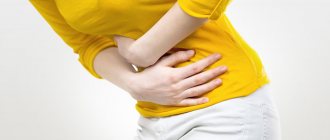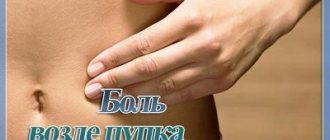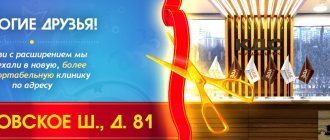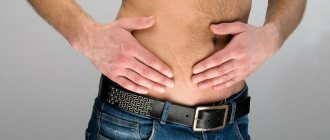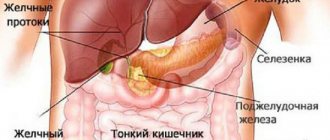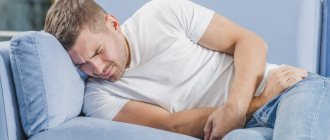Abdominal pain after defecation is not a specific symptom, that is, it is simply impossible to make a diagnosis based on such a complaint alone. Difficulties in diagnosis may also be due to the fact that a pain outbreak can radiate to different places, which is why the patient begins to incorrectly describe his complaints.
Painful sensations can be caused by diseases of the intestines, bladder, reproductive system or spine. In making an accurate diagnosis, it is extremely important to find out the nature of the pain, as well as the accompanying symptoms.
Pain in the lower abdomen during defecation can be of various types: pulling, cutting, acute, continuous, paroxysmal, prolonged. Soreness occurs in the center or lower abdomen, on the sides, or even in the anorectal area.
About pain after urination
Pain after urination usually indicates problems, diseases, pathologies that are present in the bladder. Most often, pain after urination is caused by inflammatory bacterial diseases, such as cystitis, chlamydia, pyelonephritis , etc.
Most often, women suffer from pain after urination, this is due to the structure of their body. The bladder is much closer and the urethra is much shorter than in a man, this helps infections reach the bladder much faster. Also, women are much more likely to experience hormonal changes, which also activate inflammatory infectious processes in the body.
Pain after urination may appear after hypothermia or failure to comply with personal hygiene rules, with untreated infections and diseases, with gynecological or venereological diseases of the genitourinary system. Pain after urination is a symptom of another serious illness that needs urgent treatment . Ignoring this issue entails serious problems that are fraught with deterioration of the body’s condition and the activation of new serious diseases.
Pain during defecation
The act of defecation is a very important and at the same time very complex process. We are all adults and must understand that in case of any intestinal dysfunction, we should not be shy and hide our problems. In the modern world, a lot of information comes to us every day. Nowadays there is quite aggressive advertising of medicines, and the neighbor understands medicine better than any doctor, since he watches medical programs. Of course, such programs are very important, since they carry out educational work, but after watching them, a person will not become a doctor. Therefore, when the TV screen says that a certain medicine will save you from problems forever, pay attention that below it is always written about the need to consult a specialist.
If we return to the problem of painful bowel movements, we need to look at several aspects. Several components take part in the process itself: 1) the large intestine, namely its distal sections - the sigmoid and rectum; 2) pelvic floor muscles - sphincter and levators (muscles that change the angle of the anal canal). It is important to understand that there are no nerve endings in the mucous membrane of the rectum and sigmoid colon, therefore, as long as this or that process develops only within the boundaries of the inner layer, a person will not experience any painful sensations. For example, contrary to general opinion, even the advanced stage of chronic hemorrhoids does not manifest itself as pain.
Pain appears only when the pathological process affects the deeper muscle layers or spreads to the skin around the anus. This is a very important fact, since it is sometimes decisive in diagnosis. For example, with the same chronic hemorrhoids, when a pain syndrome appears, one can conclude that the disease is progressing and the formation of external nodes, which can no longer be treated using non-surgical techniques, but require surgical intervention.
If discomfort during the act of defecation is manifested by pain or pain in the lower abdomen, one can suspect an inflammatory process of the sigmoid or rectum, which affects the muscle layer, and therefore is quite advanced. The causes of such inflammation, as a rule, are divided into 3 groups: 1) infection of the rectum and sigmoid colon, including viral. The diagnosis can be made by examining a scraping of the mucous membrane. 2) Nutritional disorders (disorders of the entire gastrointestinal tract), such as acute pancreatitis, cholecystitis, gastritis, gastric ulcer, etc. 3) Serious disturbances of intestinal flora - dysbiosis (after antibiotic therapy, interventions on the gastrointestinal tract). It is clear that it is very important to establish the cause in order to treat effectively. Unfortunately, such pain syndrome can also be caused by malignant diseases of the rectum and sigmoid colon.
If the pain is mainly in the anal area, radiating to the coccyx area, this may indicate pathological processes involving the pelvic muscles, namely the anal sphincter - anal fissure, fistula, paraproctitis, etc. As a rule, all these diseases are difficult to treat with medication, require surgical intervention, and the sooner it is performed, the better.
Therefore, there is no need to hide your problems and bring them to the level of unsolvable. It is never a shame to seek help from a specialist, in this case a coloproctologist. In Volgograd, our clinic has extensive experience in helping patients with coloproctology.
Causes of pain after urination
The main causes of pain after urination:
- Urolithiasis - stones have formed in the genitourinary system, which cause pain. With urolithiasis, there is a symptom of congestion - this is the cessation of urination and its resumption after a change in body position;
- Chlamydia is a sexually transmitted sexually transmitted disease;
- Ureaplasmosis is a sexually transmitted sexually transmitted disease. In addition to pain after urination, there is clear discharge and pain in the lower abdomen;
- Urethritis - inflammation of the urethra;
- Trichomoniasis is a disease that causes pain after urination;
- Gonorrhea - in addition to pain after urination, there is inflammation of the gonads and swelling of the genitals.
Why does pain occur at the very beginning of urination?
Pain at the beginning of urine output indicates that the mucous membrane of the urinary canal is inflamed at the junction with the bladder. In men, this is the prostatic part of the urethra. This symptom may indicate:
- for bacterial prostatitis;
- urethritis (inflammation of the urethra);
- genital herpes;
- sexually transmitted infections (chlamydia, mycoplasmosis, ureaplasmosis, gonorrhea).
With bacterial prostatitis, pain appears immediately after the first portion of urine is released, and after the end there is a slight relief, but the feeling of complete emptying does not occur.
In women, the causes of pain at the beginning of urination include vaginitis and colpitis. Another symptom occurs against the background of cervicitis, an inflammation affecting the cervix. If there is additional pain or tension in the lower abdomen, this may be due to pyelonephritis - inflammation of the tubular system of the kidneys.
The presence of blood in the urine most often indicates urolithiasis. The stone moves along the ureter, irritating the receptors of the mucous membrane. In places of contact with stones, it is injured, causing small bleeding wounds to form.
Pain after urination in men
In men, pain after urination may occur due to:
- Prostatitis is inflammation of the prostate gland. This disease begins after bacteria enter the prostate from the urethra. Prostatitis appears against a background of weakened immunity, stress, and concomitant diseases of the genitourinary system. Symptoms: pain after urination, abdominal pain, pain during ejaculation, difficulty urinating, pain in the testicles;
- Phimosis is a disease during which the foreskin narrows. This disease is provoked by infection, injury, and failure to comply with personal hygiene rules. Symptoms: pain after urination, difficulty urinating, pain during ejaculation.
Causes of pain
Pain can be a symptom of a variety of diseases: diverticulosis, ulcerative colitis, Crohn's disease, cancer. Spasm, compression of nerves, inflammation, mechanical damage - all this and much more provokes discomfort. But the intestines may not always hurt after a bowel movement due to some diseases.
Sometimes the cause of this condition is the use of medications or dietary errors.
The stomach hurts after using the toilet, often due to poor nutrition
To identify the root cause, the doctor pays attention to the following factors that preceded the pain:
- Is there a tendency for discomfort to appear on certain foods? If the intestines are irritated by spicy, salty or fatty foods, the doctor may suspect the presence of diseases of the stomach, pancreas or gall bladder;
- whether the spasm is accompanied by nausea, vomiting, heartburn, belching, flatulence, diarrhea or diarrhea;
- whether there is difficulty during bowel movements;
- whether mucus or blood appears in the stool. The presence of this symptom may indicate hemorrhoids, tumor processes, prostate enlargement in men;
- whether there is pain, irritation, burning in the rectum during or after using the toilet;
- where exactly the pain is localized: in the anus or at the level of the pelvic bones.
A qualified doctor will help to identify the true cause of the pain. If the discomfort is associated with problems in the intestines or anorectal area, patients will complain of the following symptoms:
- stool changes color, smell and consistency;
- sensation of a foreign body inside the intestines;
- bloating;
- secretion of mucus, pus and blood;
- causeless weight loss;
- itching near the anus;
- temperature increase;
- weakness and fatigue.
Haemorrhoids
Hemorrhoids are varicose veins of the hemorrhoidal veins. One of the main symptoms of hemorrhoids is pain. In most cases, painful outbreaks are long-lasting and intense, especially intensifying after bowel movement.
The anorectal area contains a large number of pain receptors, which is why the pain is pronounced. Due to severe pain, patients develop a fear of bowel movements; this is fraught with the development of chronic constipation, which further aggravates the situation.
With acute hemorrhoids, the pain becomes excruciating and simply unbearable
Often the pain becomes throbbing. An intensification of the painful outbreak can cause defecation, coughing, and sneezing. It is sometimes even painful for patients to sit on a chair and move around. This greatly affects the quality of life and psychological state.
Hemorrhoids can be caused by poor diet, chronic constipation, a sedentary lifestyle, intense physical activity, heavy lifting, standing work and much more. To combat the disease, an integrated approach should be taken. This includes not only drug therapy, but also changes in diet and overall lifestyle.
Rectal fissure
Anal tears can cause a variety of diseases, including hemorrhoids. The mucous membrane can become damaged after prolonged constipation, when the stool has a stone density. Cracks provoke severe pain, itching, burning, disrupting the usual rhythm of life.
A painful outbreak occurs after bowel movement and persists for some time. The patient develops a psychological fear of the act of defecation. Patients often describe the pain of rectal fissures as feeling like broken glass passing through. In some cases, anal tears cause the development of rectal bleeding.
The acute process is eliminated by complex control methods: dietary nutrition, drug therapy, physiotherapy and traditional medicine methods. If we are talking about the chronic course of the disease, then conservative treatment will be powerless; in this case, surgical methods are used.
Helminthiasis
A parasitic disease is characterized by the following symptoms:
Feeling of bloating in the lower abdomen
- itching in the anus;
- pain in the intestines;
- peeling of the skin;
- nausea;
- salivation;
- weakness and drowsiness;
- diarrhea;
- flatulence;
- increased appetite due to weight loss.
The fight against parasites includes following a strict diet, observing personal hygiene rules, disinfecting the premises, and drug therapy.
Bowel pain may be a symptom of parasitic diseases
Ulcerative colitis
Ulcerative colitis is an inflammatory disease of the rectum and colon, in which ulcerative-destructive changes in the mucous membrane develop. The disease has a chronic course.
Experts put forward various theories regarding the reasons explaining the development of ulcerative colitis: neurogenic, enzymatic, allergic, infectious, immune, genetic. The disease is manifested by abdominal pain, bleeding during bowel movements and disturbances in bowel function.
The painful outbreak acquires a constant cramp-like character, most often localized in the left lower abdomen. The pain intensifies before defecation and goes away after bowel movement.
Treatment primarily involves ensuring physical and mental peace. Following a diet is extremely important. The fight against ulcerative colitis also involves the use of medications, detoxification of the body, and in severe cases, surgery.
The main cause of pain after bowel movement is bowel disease
Crohn's disease
Crohn's disease is a chronic inflammatory disease of the digestive tract that can affect almost all parts of the gastrointestinal tract. Experts highlight the role of hereditary factors in the occurrence of the disease.
An infectious and immunological theory has also been put forward. Unlike ulcerative colitis, Crohn's disease affects the deeper layers of the mucous membrane. In some cases, the pain is mild, and in others it becomes acute cramping.
Often a painful outbreak is accompanied by bloating and a feeling of heaviness in the right side. Because of this, patients often confuse Crohn's disease with acute appendicitis. The condition may be aggravated by the appearance of nausea, vomiting, and diarrhea.
Due to intoxication of the body and a decrease in defenses, general symptoms of the disease appear:
- weakness;
- general malaise;
- chills and fever;
- constant feeling of fatigue;
- wave-like hyperthermia;
- anemia;
- problems with the blood coagulation system.
To stop the inflammatory reaction, specialists prescribe corticosteroids. In case of an acute process, antibiotic therapy cannot be avoided. Broad-spectrum antibiotics are usually preferred.
Pain after urination in women
Causes of pain after urination in women:
- Cystitis is an inflammatory disease of the bladder. The disease most often occurs against the background of a weakened immune system, stress, constant hypothermia, or the presence of an infectious disease of the genitourinary system. Symptoms: pain after urination, pain in the lower abdomen, frequent incomplete urination;
- Candidiasis is a fungal disease that causes itching and irritation of the external genitalia. White cheesy discharge appears. Symptoms: pain after urination, vaginal discharge, itching, burning, pain during sexual intercourse.
CAUSES OF DIAGNOSIS AND TREATMENT OF CHRONIC PELVIC PAIN We will not touch upon the pain that is a symptom of any disease of the internal organs (inflammation of the uterus and appendages, cancer pain, acute period: trauma), since this pain cannot be called chronic. Another thing is if the patient has undergone surgery or received treatment for his illness, and the pain remains and lasts for more than 2 months, then it turns into an independent disease, which greatly reduces the quality of life and can lead to loss of work and disability.
What types of chronic pelvic pain exist? There may be pain in the lower abdomen, perineum, pain in the rectum or vagina, pain locally in the anus or clitoris or in the inguinal fold. This can be local pain, or pain that covers the entire area of the lower abdomen (below the navel) and pelvis.
1. Hemorrhoids are the most common cause. If there is no exacerbation or if the hemorrhoids are removed, the pain usually goes away. If it does not go away, and there are no organic reasons for this (tumor, inflammation of the intestines), then chronic pelvic pain has arisen.
To determine the cause, it is necessary to conduct test therapeutic and diagnostic blockades to find the source in order to subsequently block the signal using pulsed radiofrequency ablation (PRF) and break the vicious circle of pain. Most often, blockade and subsequent ablation of the pudendal (pudendal) nerves are performed. These nerves innervate the rectum, anus, perineum and vagina on both sides. In men, they innervate the scrotum and penis. But even if it is thrombosed hemorrhoids, when thrombosis of the hemorrhoids has occurred and the pain is very severe, then it is not at all necessary to endure such pain. Specialists at the pain treatment clinic can install a catheter to the nerves of the rectum, install a pump that will constantly supply an anesthetic solution and the pain will subside, and after the exacerbation ends, they can routinely perform surgery to remove hemorrhoids. Such therapeutic measures, in turn, prevent the development of chronic pain syndrome in the future. Methods used for this pathology at the Anesta clinic: Caudal block - eliminates pain and spasm in the lower abdomen. Epidural blockade with the installation of an elastomeric pump - for a long time (the time the pump is connected) relieves pain in the anorectal area, makes it possible to pass stool smoothly and painlessly, relieving spasm of the sphincters and preventing additional injury to the hemorrhoids. Spinal block (saddle block) – for several hours (up to a day) eliminates pain in the anorectal area. Blockade of the pudendal nerves - for several hours (up to a day) eliminates pain in the anorectal area, perineum and vagina. Pulse radiofrequency ablation of the pudendal nerves for 2-4 months significantly reduces pain from hemorrhoids, eliminating spasm and trauma. As a result, the pain disappears and surgery can be performed during the “cold” period.
2. An anal fissure is a tear that occurs in the anus (the opening through which stool exits the body) that extends upward into the anal canal. They occur equally in men and women, both young and old. Fissures usually cause pain during bowel movements, which is often severe. Anal fissure is the most common cause of rectal bleeding in infancy.
The standard treatment for anal fissure in case of ineffective conservative therapy (suppositories, ointments, laxatives) and if the infectious or tumor nature of the fissure is excluded, surgery is considered to be lateral sphincterotomy (excision of anal fissure). However, the consequences of such an operation can be unpleasant for the patient, such as incontinence of gases and the liquid part of the stool; the number of such postoperative complications, depending on the method of operation and the experience of the surgeon, ranges from 5 to 25%. What is paradoxical at first glance is that even after surgery, pain can remain.
Modern scientific research shows that often the cause of the formation of a fissure in the anus is improper functioning of the pelvic floor muscles and rectal sphincters. The most common abnormalities are hypertension and hypertrophy of the internal anal sphincter. The internal sphincter maintains the resting pressure of the anal canal. Most patients with anal fissures have elevated resting pressure. The posterior anal commissure is the most poorly supplied part of the anal canal. In patients with hypertrophied internal anal sphincters, this poor blood supply is further compromised, making the posterior midline of the anal canal relatively ischemic. This relative ischemia is thought to explain why many fissures do not heal spontaneously and may persist for years. Pain accompanies every bowel movement as the area is stretched and the damaged lining is worn away by stool. This spasm has two effects: firstly, it is accompanied by pain in itself, and secondly, it further reduces blood flow to the posterior midline and anal fissure, which contributes to a slow healing rate. Methods used for this pathology at the Anesta clinic: Block of the pudendal nerves (relieves pain, reduces swelling of the nerve structures) Pulse radiofrequency ablation of the pudendal nerves (eliminates pain for a long period of up to 2 years Blockade of the rectal sphincters (relieves pain and makes it possible to determine how effective botulinum therapy will be) Blockade of the puborectal muscle (determining the participation of spasm of this muscle in the process of formation of the pain syndrome) Botulinum therapy of the sphincters of the rectum and puborectal muscles - eliminates spasm and improper functioning of muscles and sphincters. As a result, pain and spasm stop, the “vicious circle” is broken and the crack heals.
3. Anism can occur in both children and adults, and in both men and women (although it is more common in women). This pathology can be caused by the following reasons: if this pelvic floor muscle (puborectal) is hypertrophied or damaged during pregnancy and childbirth or after gynecological surgery, or the cause may be unknown.
Symptoms include tenesmus (a feeling of incomplete emptying of the rectum after bowel movements) and constipation. Retaining stool can lead to fecal load (holding a mass of stool of any consistency). This mass can stretch the walls of the rectum and colon, causing megarectum and/or megacolon, respectively. In addition, chronic constipation, tension and straining during defecation lead to the formation of rectal fissures. All this, as a rule, is accompanied by chronic pain syndrome.
Let's try to explain in simple words what the reason is. Stylized diagram showing the structure and formation of the anorectal angle. A- musculus puborectalis (puborectal muscle, wraps around the rectum and is attached to the pubic bone, when contracting it creates the anorectal angle), B- rectum, C- anorectal angle, D- anal canal, E- anal edge, F- internal and external anal sphincter, G-coccyx and sacrum, H-pubic symphysis, I-ilium, J-pubic bone. When a person sits down, the anorectal angle increases and the puborectal muscle relaxes; accordingly, the sphincters relax and the act of defecation occurs. If the muscle remains tense, both the internal and external sphincter become tense. The intestine does not completely empty, it stretches, you have to push even harder and the internal sphincter breaks, that is, a crack forms, which further increases the pain and makes defecation more difficult. At the same time, megacolon (enlargement of the large intestine) forms over time. The patient goes to the doctors, undergoes an examination (colonoscopy, sigmoidoscopy), finds a megacolon, performs a bowel resection, and the problem worsens significantly, sometimes ending in disability. Even if the diagnosis and cause-and-effect relationship are established correctly, operations on the puborectal muscle often end in unsatisfactory results. Methods used for this pathology at the Anesta clinic: Blockade of the puborectal muscle (determining the participation of spasm of this muscle in the formation of pain) Botulinum therapy of puborectal muscles - eliminates spasm and improper functioning of muscles and sphincters. Blockade of the pudendal nerves (relieves pain, reduces swelling of the nerve structures) Pulse radiofrequency ablation of the pudendal nerves (eliminates pain for a long period of up to 2 years. As a result, the spasm of the puborectal muscle stops, the degree of its hypertrophy decreases, the “vicious circle” is broken and the act of defecation is normalized .
4. Proctalgic fugues (lumbago in the rectum). Sharp, sudden pain in the rectum, lasting from a few seconds to several minutes. May be accompanied by pain in the lower abdomen radiating to the perineum and lower part of the vagina. So-called fugues, or painful spasms, can occur at any time of the day with varying frequency. The intensity of the pain and its suddenness are such that patients say that “it takes your breath away.” They are very difficult to treat; conservative methods can only reduce the strength of the spasms. But not their frequency. Their cause is unknown but is associated with trauma or stress. Methods used for this pathology in the Anesta clinic: Blockade of the internal anal sphincter Botulinum therapy of the internal anal sphincter Block of the pudendal nerves (relieves pain, reduces swelling of the nerve structures) Pulse radiofrequency ablation of the pudendal nerves (eliminates pain for a long period of up to 2 years Despite Although such pain is considered intractable, we manage to achieve 100% results.
5. Pain in the vagina, this pathology also includes vaginismus, that is, contractions of the vaginal muscles under the influence of an irritant, including sexual intercourse, causing severe pain. May be unilateral, including with Alcock's canal syndrome (see below). It may be the result of injury, surgery, complicated childbirth, or adhesions in the areas where the branches of the pudendal (genital) nerve pass. Methods used for this pathology in the Anesta clinic: Blockade of the pudendal nerves (relieves pain, reduces swelling of the nerve structures) Hydrodessection of the pudendal nerves Pulse radiofrequency ablation of the pudendal nerves (eliminates pain for a long period of up to 2 years As a result, within 1 month it occurs complete disappearance of symptoms. 5. Pain in the vagina, this pathology also includes vaginismus, that is, contractions of the vaginal muscles under the influence of an irritant, including sexual intercourse, causing severe pain. It can be one-sided, including with Alcock’s canal syndrome (see. below). May be the result of injury, surgery, complicated childbirth, adhesions in the places where the branches of the pudendal (genital) nerve pass. Methods used for this pathology at the Anesta clinic: Block of the pudendal nerves (relieves pain, reduces swelling of the nerve structures) Hydrodessection pudendal nerves Pulse radiofrequency ablation of the pudendal nerves (eliminates pain for a long period of up to 2 years. As a result, symptoms completely disappear within 1 month.
5. Pain in the vagina, this pathology also includes vaginismus, that is, contractions of the vaginal muscles under the influence of an irritant, including sexual intercourse, causing severe pain. May be unilateral, including with Alcock's canal syndrome (see below). It may be the result of injury, surgery, complicated childbirth, or adhesions in the areas where the branches of the pudendal (genital) nerve pass. Methods used for this pathology in the Anesta clinic: Blockade of the pudendal nerves (relieves pain, reduces swelling of the nerve structures) Hydrodessection of the pudendal nerves Pulse radiofrequency ablation of the pudendal nerves (eliminates pain for a long period of up to 2 years As a result, within 1 month it occurs complete disappearance of symptoms. 6. Pain in the coccyx (coccygodenia) - a term formed from the Greek words “coccyx” - coccyx and “one” - pain, denotes the main localization of pain. This is a condition characterized by paroxysmal or constant pain in the coccyx area, throbbing pain in the anus in the complete absence of organic pathology in the rectum. The cause may be a previous injury to the coccyx, or the cause remains unknown. The most effective method of treatment is blockade and neurolysis of the azygos ganglion. The azygos ganglion is the nerve ganglion of the right and left sympathetic trunks, lying on the anterior surface of the coccyx, fibers go from it to the autonomic plexuses of the pelvis. Methods used for this pathology in the Anesta clinic: Blockade of the azygos ganglion (therapeutic and diagnostic) Neurolysis of the azygos ganglion is carried out 3 times with the aim of destroying the azygos ganglion, which is the source of pain during coccygogenesis. As a result, symptoms disappear completely within 1 month.
7. Pain in the perineum can be caused by trauma during sexual intercourse, childbirth, a rupture of the perineum during childbirth, or a previous gynecological operation; in addition, the causes may be unknown. As a rule, the pain is one-sided, but can be difficult to localize. Methods used for this pathology at the Anesta clinic: Blockade of the puborectal muscle (determining the participation of spasm of this muscle in the process of pain syndrome formation). Pudendal nerve block (relieves pain, reduces swelling of nerve structures). When the source of pain is identified, if there is an adhesive process, hydrodissection is used to release the nerve structures, followed by pulsed radiofrequency ablation (PRF). As a result, symptoms disappear completely within 1 month.
8. Alcock's canal syndrome (Pudendal neuralgia) There are so-called Nantes criteria, which were developed by JJ Labat, R. Robert, G. Amarenco (these criteria were discussed and ratified by a multidisciplinary working group in Nantes [France] September 23-24, 2006 [Nantes criterion ] and subsequently approved by SIFUP PP). Five main criteria have been identified: 1. Severe pain in the area innervated by the pudendal nerve; 2. Pain mainly occurs in the sitting position; 3. As a rule, pain does not cause the patient to wake up at night 4. Pain does not cause serious sensory impairment; 5. Pudendal nerve block relieves pain. It is 3 times more common in women than in men. Typically, patients describe the pain as neuropathic, i.e. burning, paresthesia. Most often, the pain is localized on one side. The sensation of a foreign body in the rectum is very typical. Alcock's canal is located under the sacrotuberous ligament, and is formed by the split fascia of the obturator internus muscle, where the pudendal nerve can be pinched and damaged. Methods used for this pathology in the Anesta clinic: Therapeutic and diagnostic blockade of the pudendal nerve in Alcock's canal Used Ultrasound-guided release of the pudendal nerve in the Alcock Canal, English version: PRACAU (Pudendal Relief Alcock Canal Advanced Ultrasound) protocol It consists of isolation and hydrodissection using platelet-rich plasma (PRP) - 10 ml and local anesthetic (levobupivacaine 0.125%) , the manipulation is minimally invasive and is carried out under ultrasound guidance. Pulse radiofrequency ablation (PRF) of the pudendal nerve significantly enhances and consolidates the effect of treatment. As a result, within 3 months there is a reduction in symptoms by 90% of the original level. Pulse radiofrequency ablation (PRF) of the pudendal (genital) nerve. The cannula is inserted into the nerve under ultrasound guidance. Blockade and botulinum therapy of the rectal sphincters is carried out under ultrasound control through the perineum.
